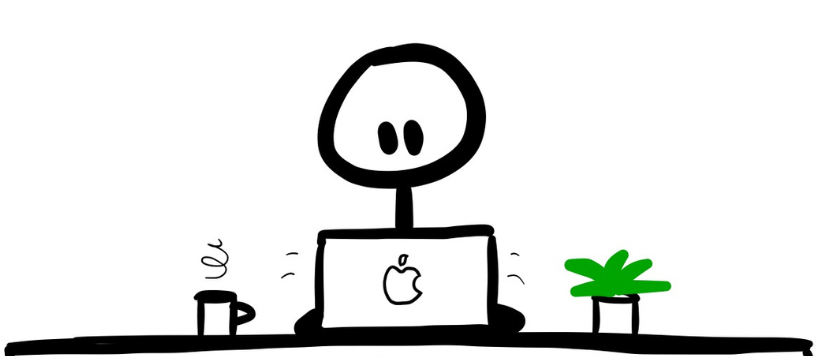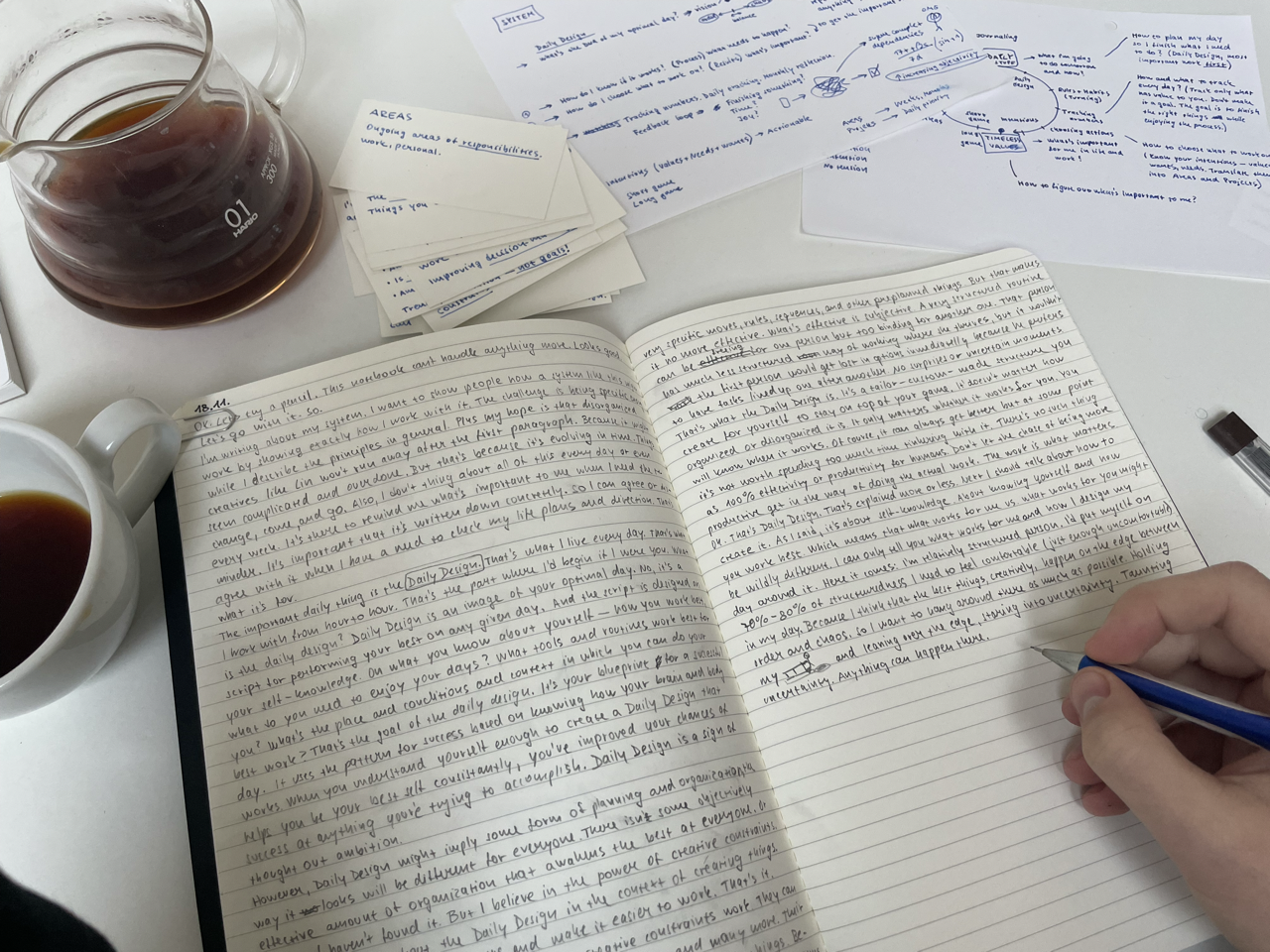Ondrej Markus
Entrepreneur in ed-tech, building the future of education as a founder and CEO at Playful.
I write about the future of education, designing learning games, and running a startup.
I'm a generalist, introvert, gamer, and optimizing to be useful.

#19: Big messy projects

I had a slow week.
It happens when I’m pushing a big project over the finish line. Each step feels like it takes forever.
I want to finish it faster because I started the project as a short article about how to design a system to organize your work and life while I was doing 20+ interviews for the book.
Well, the article became a five-chapter guide. Still unfinished after a month of work. And I need to finish it before I get back to the book.
Because if I put it aside now, I won’t come back to it. I have five or more projects like that sitting in my drawer. So I’m attacking it from all angles, with every weapon I can find. Just to finish it.

Weapons activated
My weapons for wrestling with big projects
When finishing big projects, I get desperate and will do anything to progress: whiteboards, outlining, handwriting,… anything that moves me forward.
I want to take you behind the scene today, and show you how messy it gets.
Sketching on whiteboards
There’s a giant whiteboard in my studio. It helps me think through different stages of the project. I like the bigger scale compared to paper. Another bonus: I can walk around while I stare at it.

Scan of my whiteboard notes

Another whiteboard scan (there are plenty)
Drafting by hand
Handwriting helps get the first draft done and also gets me unstuck whenever I start overthinking. (Which is always.)
To me, it’s easier to write by hand because it feels less definitive. I’m free to think out loud on paper and change things later. It’s silly because the digital page works the same. I don’t know why handwriting does this for me.
Maybe it’s because my thoughts come faster than I can write, so I never stop writing. I’m always catching up to the next idea, trying not to lose it.

Writing a draft by hand
Creating outlines
I need to bring structure to the project at some point, so I create an outline in Logseq.
Outlining is my sense-making step where I forge everything I have so far into one sequence to see how it fits together. I do that many times at different points.
I could create an outline anywhere. But the neat thing about a program like Logseq (or Roam, or Notion) is that the toggle feature lets you hide bits you don’t need to see. That’s useful in a big project.

Outline draft of the guide in Logseg (on the left)
Editing in Final Draft
Final Draft is my newest secret weapon. It’s a writing tool for movie scripts that I’ve tried before, but it’s too complicated for articles.
However, it has incredible features for complex projects. I love its visual outline and the beat board. They are perfect for creating a structure of all the project’s little pieces and seeing it as I write and edit.

Beat board and visual outline in Final Draft

Writing while looking at the board/outline in Final Draft
This side-project turned out to be an unexpectedly difficult beast to finish. Nevertheless, my aim is to beat it in the next two weeks. So hold me accountable, please. I need to get it done so I can go back to writing the book.
Shy to show my work
Today, right now, I was secretly practicing showing you the insides of my process.
That’s because I’m doing an experiment on Twitter for the next 14 days, where I will share at least one thing from my process a day.
Maybe nobody cares about pictures of my handwriting, but I want to get into the habit of sharing something every day.
Sharing things online still feels new and scary to me. But it’s a useful self-marketing practice for independent creators/writers/entrepreneurs. So I need to get better at it.

Whenever I’m thinking about sharing my process…
If something here is interesting to you, let me know. (Click on that reply button and tell me, please.)
That’s all for today.
Have a good week.
Byye.